2018 Mid-Year in Austin

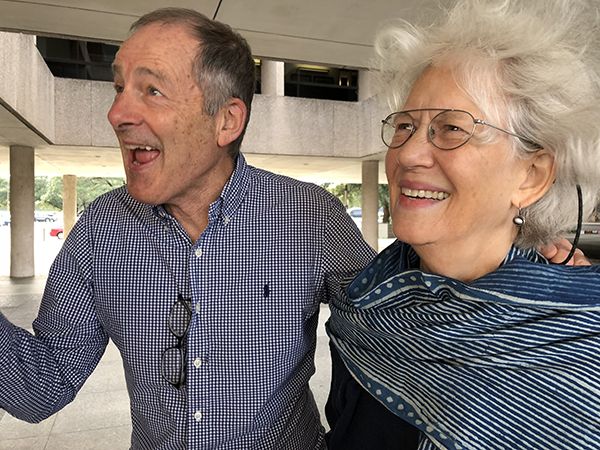
Our band of eager ephemerists kicked off two days of tours at the LBJ Library.
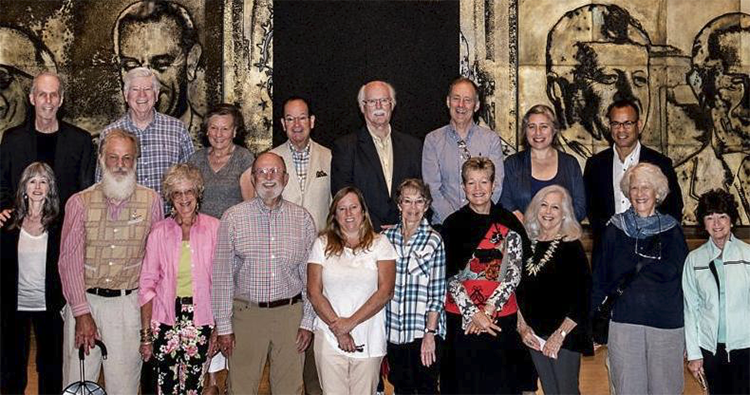

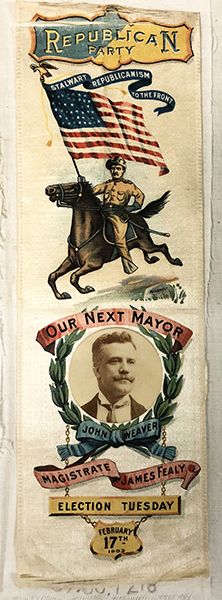
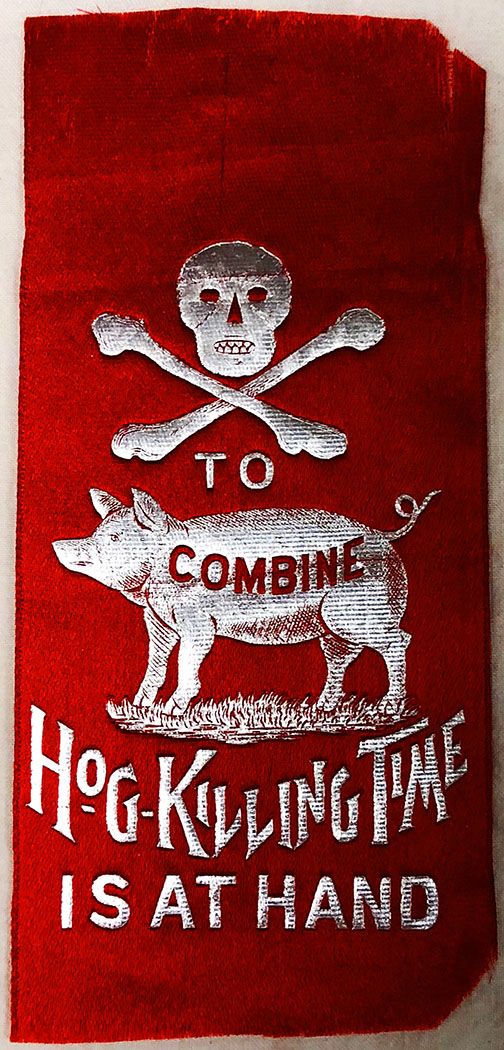
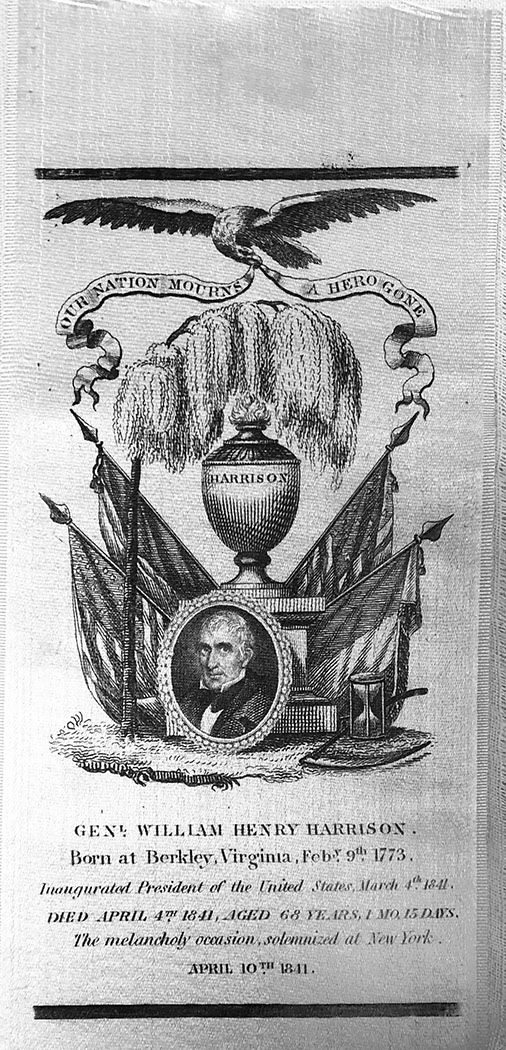

The strength of the LBJ Library is the extraordinarily detailed record of LBJ’s presidency: every telephone call recorded, every hour of every day memo’d. The LBJ archives are part of the National Archives, and the 54,000 items in the museum include gifts to LBJ as Head of State (such as a Diego Rivera painting), as well as domestic gifts that LBJ deeded to the library.
Another highlight at the Library was the exhibition Get in the Game: The Fight for Equality in American Sports. Examining the intersection of social justice and sports in the United States, Get in the Game celebrates athletes who have broken barriers and spoken out for equality, both on and off the playing field. Beginning in the late 19th century and continuing through the current day, the show encourages visitors to think about sports as part of an ongoing national conversation and as a vehicle for social change.
Curator Nikki Diller explained that the idea for this major exhibition emerged ten years ago, and it was two years in the making — with updates as current events demanded more interpretation. ESA member Claude Johnson, founder and Executive Director of the Black Fives Foundation, flew to Austin for the day to join us. The Foundation’s Historical Archives world’s leading collection of rare and historically important artifacts from the Black Fives Era of basketball, was a significant contributor to the exhibition.
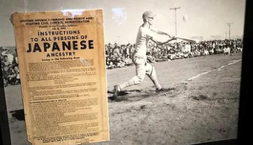
The Stark Center for Physical Culture (University of Texas)
UT faculty member Dr. Terry Todd, who passed away in June, was a national weight-lifting champion, as was our host, his wife, Dr. Jan Todd.host. Together they amassed an large collection of material on physical culture. Important sub-collections came from pioneering weightlifting coach Roy J. McLean and vaudeville strongman and sports historian Ottley Coulter.
Funding to turn this accumulation into a museum came from University of Texas supporter and eccentric millionaire, Lutcher Stark. The museum is now incorporated into the stadium building on campus, with a library and archives, exhibit space, and reading room. At the moment, eleven Stark doctoral candidates are studying the collection, which covers not just body-building and weight-lifting, but also naturopathy and other health reforms.
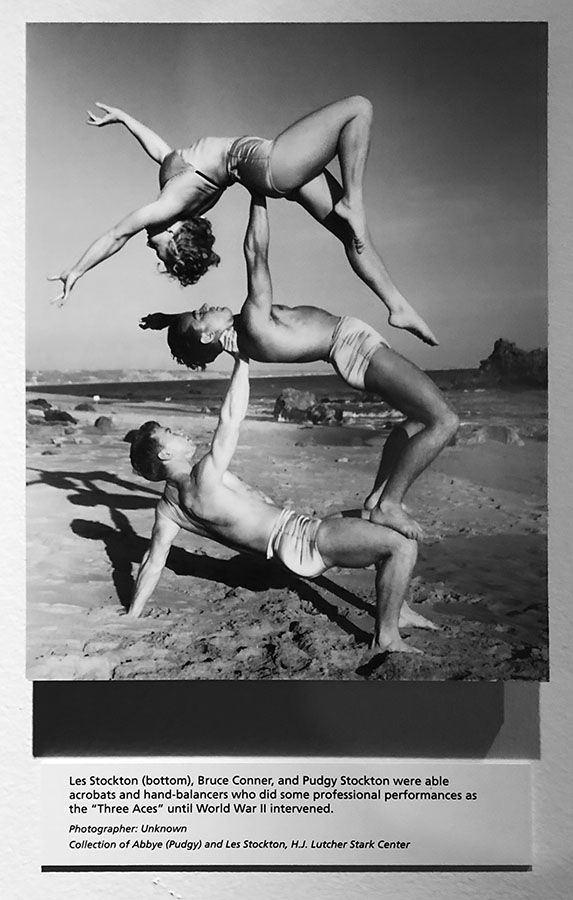
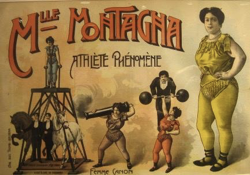

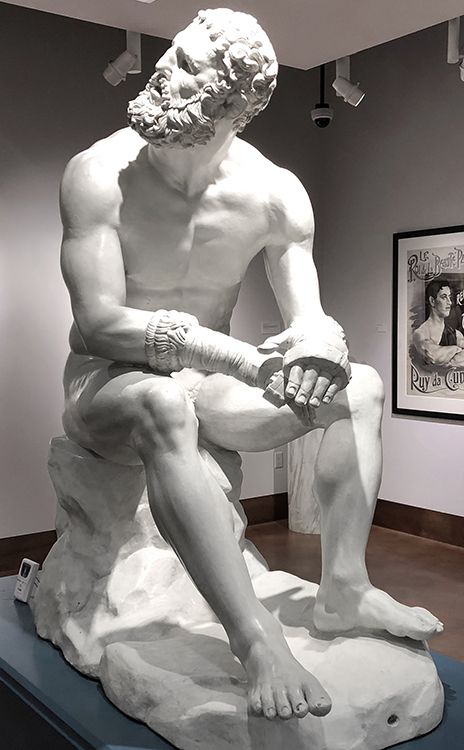
The South Austin Popular Culture Center
SouthPop has been keeping Austin weird since 2005 — collecting and displaying the distinctive posters and other ephemera of the live music scene in the city. Guitarist Freddie Steady KRC, Vice-President of SouthPop, performed wonderfully for us, along with Champ Hood on fiddle.
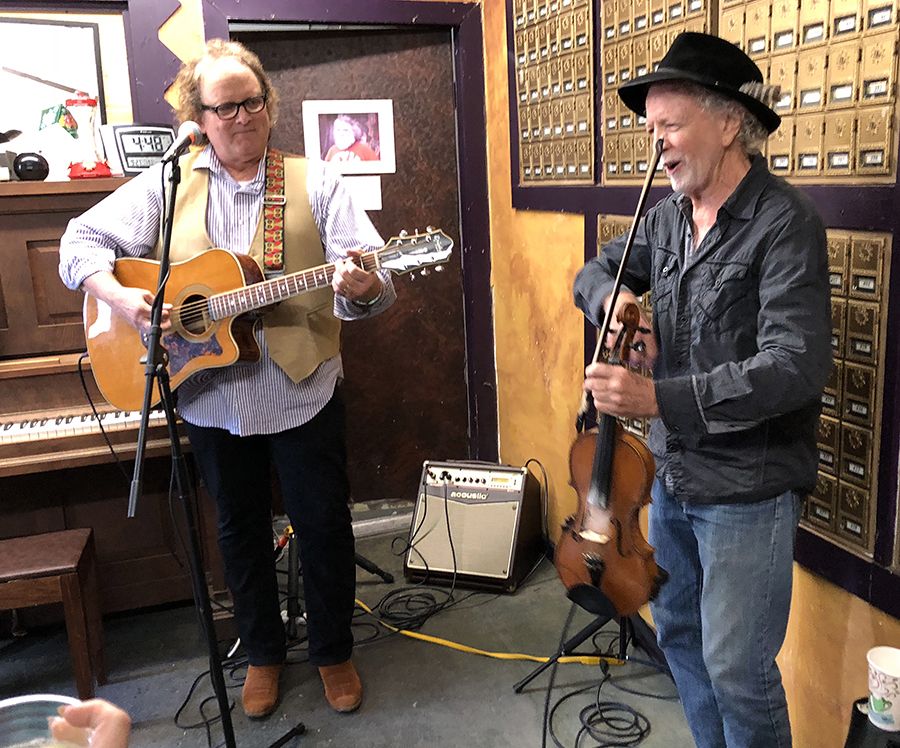

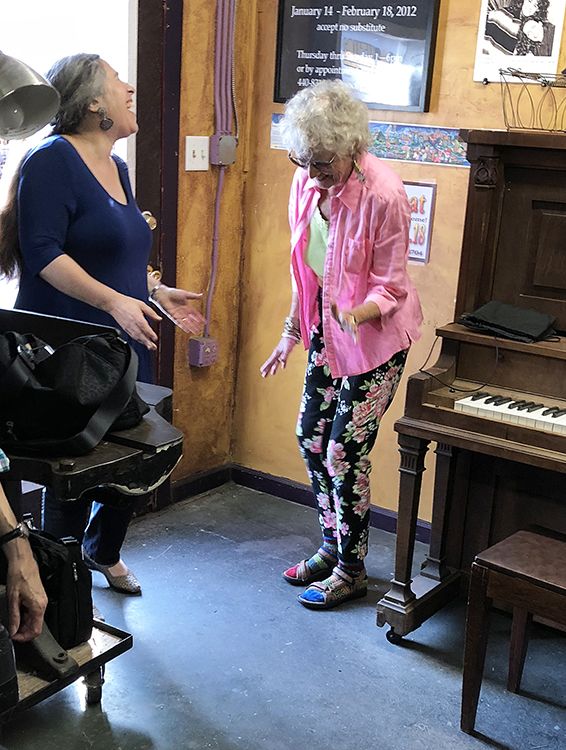
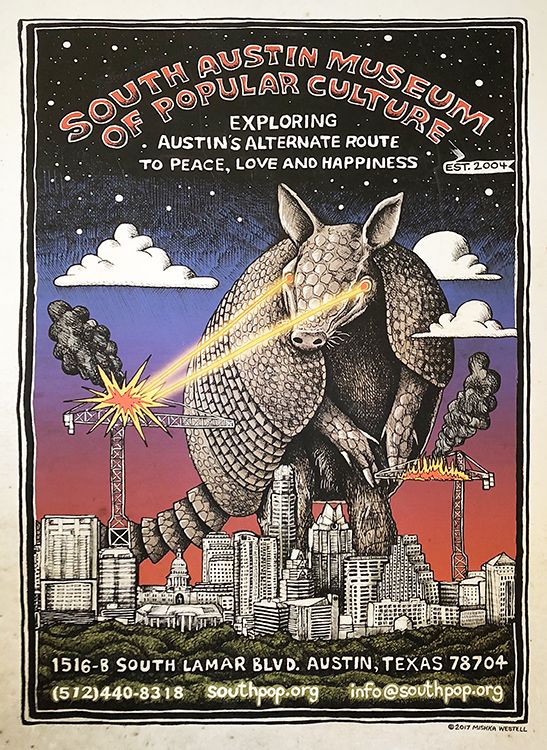

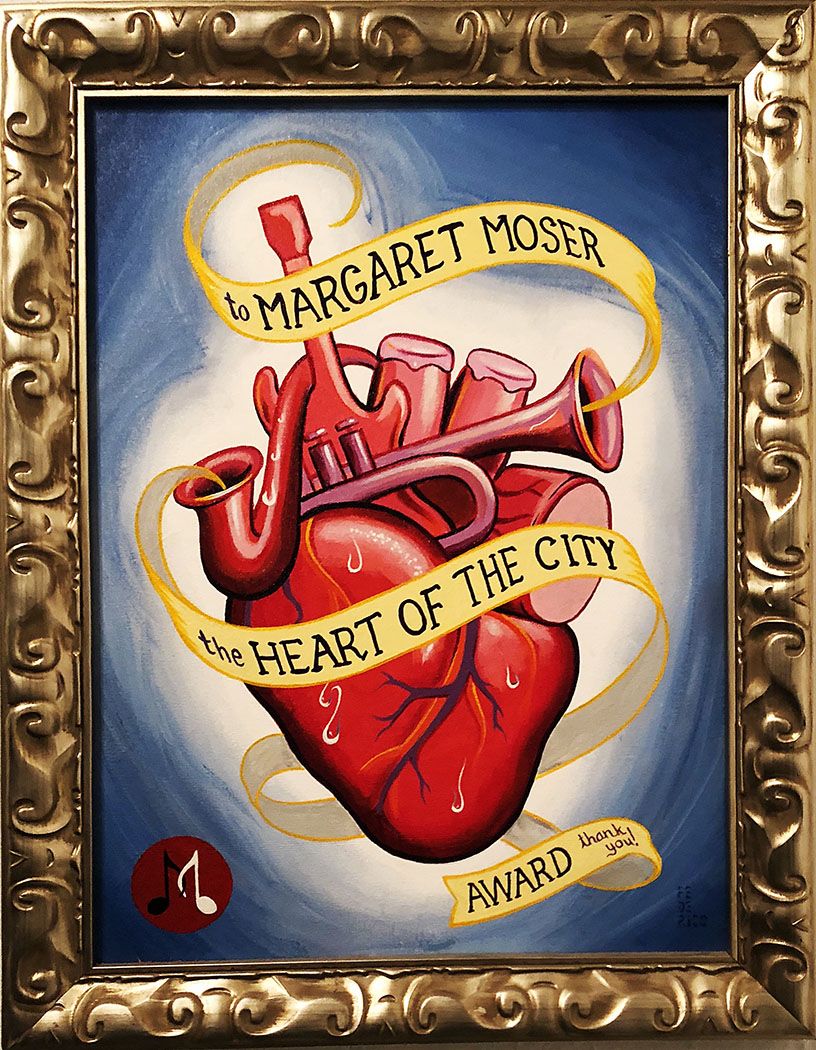

A Private Mark Twain Collection
Kevin MacDonnell and his wife Donna met in high school in Houston, and for over 30 years have been filling the limestone house they designed in Northwest Austin with antiques, their rare book business, and a vast private collection of Mark Twainiana. Kevin has lent many of his objects and much of his ephemera to Twain museums for special exhibit, and has written extensively on the man and his works. He gave us each a 2006 issue of the Mark Twain Journal with his 68-page article recreating Stormfield, Twain’s last home. The house no longer exists, so Kevin compiled a “Virtual Tour” with drawings, rare photographs, and room plans, all gleaned from Twain archives.
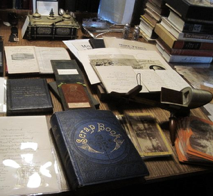
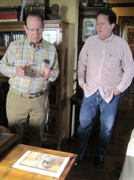
The Dolph Briscoe Center for American History (University of Texas)
The Briscoe Center used to specialize in Texiana (and Texas holdings are still the strongest), but has covered the whole country since 1991. Head of Public Services Margaret Schlankey emphasized that their motto is, “No records, no history.” The center collects, preserves, and explores the history of the U.S. news media, the energy industry, the flag, American mathematics, and much more, continually inventing ways to integrate their holdings into the UT curriculum. To allow us “to interrogate the document,” the librarians had brought out several boxes from the Bexar Archive and invited us to explore the files and photograph whatever caught our eye. It was a feeding frenzy! A 60-page 1901 photo travel diary was especially impressive — covering in detail such topics as California oil extraction and racial attitudes of the period, including exactly how African-Americans loaded cotton onto Mississippi River boats.




Harry Ransom Center (University of Texas)
There’s no photography allowed at the Ransom Center (although it owns the world’s oldest photograph taken with a camera), but we were welcomed with a carefully chosen selection of ephemera. The parents of our Director Tamar Zimmerman had known photography historians Helmut and Alison Gernsheim, and so items from that collection (purchased by Harry Ransom in 1963) were displayed for us. Linda Briscoe Myers, Research Associate of the Photography Collection, showed us an extraordinary scrapbook kept by Edward Charles Blount 1867-75 that combined photographs in imaginative watercolor collage. Three fellowship students showed material they researched: Sarah Carlson, menus; Caroline Johnson, production materials for the series Mad Men (she is also interested in women aviators such as Harriet Quimby); and Virginia Seymour, the archive of Joe E. Ward, a clown from the 1920s-60s.
